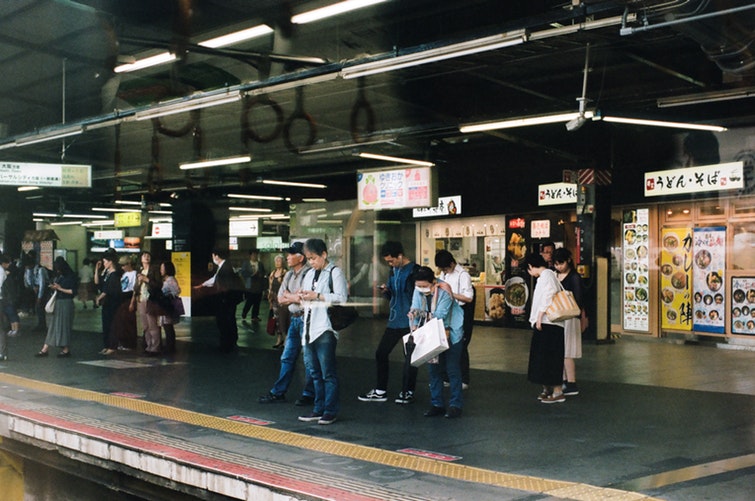How ‘the China tourism miracle’ has boomed over the past 20 years
HTLibrary | May 01, 2019 | Comments 0
Cast your mind back 20 years: Google was in its infancy; Blockbuster ruled the film-rental market as start-up Netflix struggled to be noticed and Chinese tourists were nowhere to be seen. Compare that with the staggering statistics achieved last year, when more than 140 million outbound trips were made by mainland travellers. Oh, and Google and Netflix weren’t doing too badly, either.
Although their rise was not unforeseen – “China could[emphasis ours] move into fourth place in the outbound travel market by 2020, behind Germany, Japan and the United States” reported the World Tourism Organisation (WTO) in 1998 – digital marketing agency Dragon Trail Interactive has called the growth in international travellers from the Middle Kingdom “the China tourism miracle”. And while destinations from Boracay to Kyoto – not to mention professional grumbler Jeremy Clarkson, Swedish hotel staff and countless ranting Redditors – might quibble with the phenomenon’s nomenclature, the “flood” (it’s been called worse) of Chinese travellers has changed the world as we know it.

Before Deng Xiaoping’s “reform and opening up” policies were introduced, in 1978, leisure travel, even within China, was scoffed at as a wasteful, bourgeois activity. Overseas adventures were unimaginable. Trips organised by the state-owned China Travel Service were allowed to select countries in Southeast Asia from the early 1990s, but it wasn’t until later in the decade that Chinese citizens were gradually permitted to roam further afield. As Wolfgang Georg Arlt writes in his 2006 book, China’s Outbound Tourism, the cost of self-paid travel put it out of reach for the vast majority in those early years of authorised exploration.
The first wave of border crossers did so on group package tours, because that was all that was available to them, and it is this image of the flag-following, rabble-rousing, coach-hopping mainland Chinese tourist that endures, despite a second wave of more sophisticated globetrotters, which Asia Dialogue, the online magazine of the University of Nottingham’s Asia Research Institute, in Britain, identifies as “middle-aged people who were well educated, earning a high salary, and had previous international travel experience”. We have now welcomed the third wave, determined by Asia Dialogue as “upper-class and middle-aged”, although this classification seems to ignore the free independent travellers, a millennial-led group of increasingly intrepid wanderers.
And it’s not just the profile of Chinese travellers that has evolved, but also the way the world receives them. When residents of Beijing, Shanghai and Guangzhou first started moving beyond their national borders, Americans and Britons (and occasionally the Japanese) contended for the dubious crown of the world’s worst tourists. Largely ignored by the media, sightseers from China went about their excursions in relative peace, at least until 2013, when a teenager did what teenagers the world over are programmed to do: carve their names into surfaces they are not supposed to carve their names into – only in this instance, the surface in question belonged to an ancient Egyptian temple complex – and pearls were collectively clutched from Cairo to Canberra. Ever since, Chinese tourists, no matter how many millions of them there are, have all been lumped together under the “undesirable” umbrella.Then there is the Chinese contribution to one of the travel industry’s current concerns: overtourism. Blowing that 1998 WTO prediction out of the water, China became the world’s largest outbound market in 2016, putting pressure on sensitive sites such as Thailand’s Maya Bay, which was forced to close indefinitely last June, and Jeju Island, in South Korea, where locals, frustrated by what they viewed as an excessive number of visitors, welcomed a boycott imposed by Beijing on Chinese tour groups in 2017.
It’s not all bad, though. The tourist yuan is welcome (even if those who spend it are not) and mobile payment platforms such as Alipay and WeChat Pay, which facilitate consumerism, are near ubiquitous across Asia and are enjoying a growing presence globally, from Australian taxis to Canadian convenience stores. Cultural exchange has, to an extent, blossomed and destinations from the Scottish highlands to restaurants in Israel have sought Mandarin speakers and chefs to cater to their newest arrivals.As with all “miracles”, there is an element of the extraordinary surrounding China’s indomitable rise to the top of the tourist charts, and, equally, the possibility that the bubble might burst. For countries such as New Zealand, which is being cold-shouldered by the Chinese following a Huawei ban, the cup runneth over, until it doesn’t.
Perhaps other hotspots should take note; to quote Joni Mitchell, “You don’t know what you’ve got till it’s gone.”
By: Mercedes Hutton – Source: https://www.scmp.com/magazines/post-magazine/travel/article/3008294/how-china-tourism-miracle-has-boomed-over-past-20
Filed Under: Tourism
About the Author:
